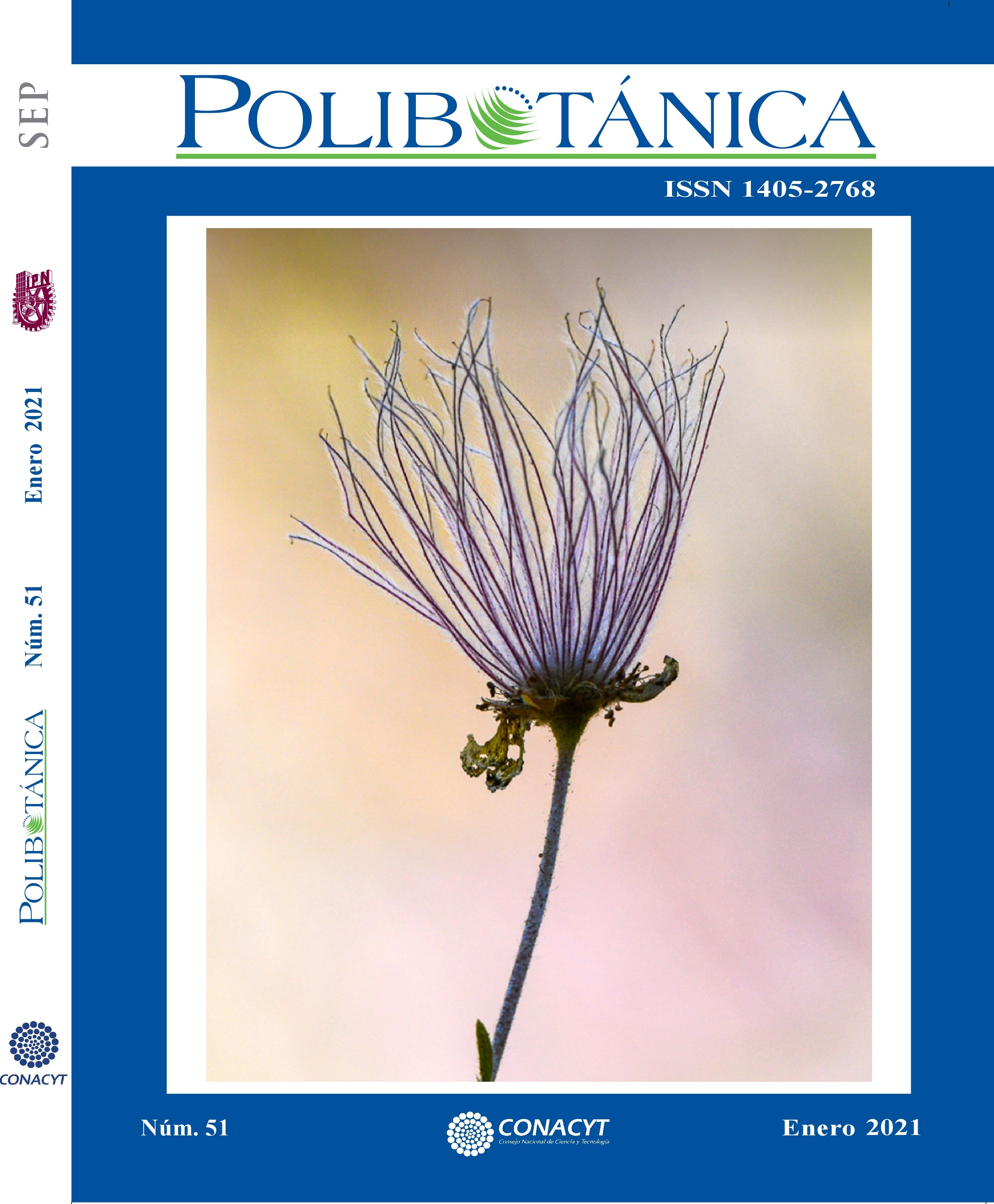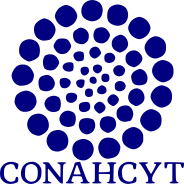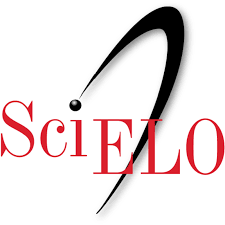Fenología floral de nueve variedades de nochebuena (Euphorbia pulcherrima Willd. ex Klotzsch).
Palabras clave:
Nochebuena, escala internacional BBCH, cambios anatómicos.Resumen
Las plantas Euphorbiaceae pertenecen a una de las familias más grande, compuesta por más de 300 géneros y 8000 especies. La inflorescencia de la nochebuena está compuesta por un conjunto de ciatos de primer a cuarto orden. La escala internacional BBCH con la cual plantearon un sistema de codificación decimal para describir las diferentes etapas fenológicas. El objetivo fue documentar la fenología floral de nochebuena sus cambios anatómicos, para definir aspectos relacionados con el mejoramiento genético. Se estudiaron tres variedades de nochebuena de sol y seis cultivares de sombra. Para las fases fenológicas de floración los registros iniciaron desde que la nervadura central de la bráctea, se hicieron observaciones diarias para describir los cambios fenológicos sucesivos hasta la formación de frutos. Se determinó la duración de la floración y se registró en días. Los datos obtenidos para duración de la floración fueron estudiados mediante análisis de varianza y comparación de medias. Los resultados en la duración de la floración mostraron que existen diferencias en cada una de las etapas fenológicas entre variedades. En las nochebuenas de sol se observó que el inicio del desarrollo del ciato ocurrió de manera ascendente, caso contrario en las nochebuenas de sombra en donde se observó que ocurren de manera ascendente. Los resultados permitieron determinar que las tres variedades de sol, Belén, Juan Pablo y Amanecer navideño pueden fungir como hembras en un programa de mejoramiento genético, por presentar mayor cantidad de flores hermafroditas y mayor cantidad de frutos formados.
Referencias
Bleiholder H, Van Den Boom T, LangelÜddeke P, Strauss R (1989). Einheitlich Codierung der phänologishen Stadien bei Kultur‐ und Schadpflanzen. Gesunde Pflanzen 41:381-384. Google Scholar
Dorthea NM, Farestveit B, Skytt A A (2003). Adventitious Shoot Development from Decapitated Plants of Periclinal Chimeric Poinsettia Plants (Euphorbia pulcherrima Willd ex Klotsch). Europ. J. Hort. Sci 4: 161–168. http://www.pubhort.org/ejhs/2003/file_6391.pdf
Ecke P, Faust J E, Higgins A, Williams J (2004). The Ecke Poinsettia Manual. 1st. edition. Ball Publishing. Batavia, Illinois 60510. 287 pp.
Elias TS, An-Ci S (1985). Morphology and Anatomy of Foliar Nectaries and Associated Leaves in Mallotus (Euphorbiaceae). J Syst Evol. Bot. 11: 17-25. http://doi:10.5642/aliso.19851101.03
Gales R, Toma C, Lăcrămioara I (2008). Morphological and histo-anatomical aspects regarding the floral morphogenesis in Euphorbia cyparissias L. (Euphorbiaceae juss.). Biol. Veg. 18:21-24. http://www.bio.uaic.ro/publicatii/anale_vegetala/issue/2008F2/02-2008F2.pdf
Grueber, K L (1985) Euphorbia pulcherrima. In: Handbook of Flowering Vol. II. Halevy, A. H. pp. 488–495. (ed.). CRC Press, Inc. Boca Raton. Florida, USA.
Hack H, Bleiholder H, Buhr I, Meier UND, Schnock-Fricke U, Weber E, Witzenberger A (1992). Einheitliche codierung der phänologischen entwicklungsstadien mono-und dikotyler pflanzen- erweiterte BBCH-skala, Allgemein- Nachrichtenbl. Deut. Pflanzenschutzd 44:265-270. Google Scholar
Hayashi T, Wakahara Y, Konishi K (1990). Development and composition of compound inflorescence in Poinsettia.J.JAPAN Horticulture Society 4:839-845. https://doi.org/10.2503/jjshs.59.839
Huang CH, Chu CY (2008). Methods to improve Poinsettia fertility. Sci. Hortic. 3:271-274. Google Scholar
Lee IM (2000). Phytoplasma casts a magic spell that turns the fair poinsettia into a Christmas showpiece. P. H. P. doi: 1094/PHP-2000-0914-01-RV.
Lutken H, Clarke JL, Muller R (2012). Genetic engineering and sustainable production of ornamentals: current status and future directions. Plant. Cell. Rep. 31:1141-1157. doi: 10.1007/s00299-012-1265-5.
Mantovani M, Ruschel AR, Sedrez dos Reis M, Puchalski, Nodari RO (2003). Fenologia reproduiva de espécies arbóreas em uma formação secundária da floresta Atlântica. Rev. Árvore 27:451-458. http://www.scielo.br/pdf/rarv/v27n4/a05v27n4
Martinelli T, Andrzejewska J, Salis M, Sulas L (2015). Phenological growth stages of Silybum marianum according to the extended BBCH scale. Ann. Appl. Biol. 166:53-66. https://doi.org/10.1111/aab.12163
Mwine TJ, Van Damme P, Gerard K, Charles K (2011). Ethnobotanical survey of pesticidal plants used in South Uganda: case study of Masaka district. J. Med. Plants Res. 5:1155–1163. http://hdl.handle.net/1854/LU-1966602
Narbona FE, Ortiz PL, Arista M (2000). Ciatios masculinos en dos especies perennes de Euphorbia (Euphorbiaceae): E. boetica Boiss. y E. nicaeensis All. Anales Jard. Bot. Madrid 58:183. https://doi.org/10.1093/aob/mcf099
Narbona E, Ortiz PL, Arista M (2011). Linking Self-Incompatibility, Dichogamy, and Flowering Synchrony in Two Euphorbia Species: Alternative Mechanisms for Avoiding Self-Fertilization? PLoS ONE 6(6): e20668. https://doi.org/10.1371/journal.pone.0020668
Ramírez-Bullón N, Ceroni-Stuva A, Castro-Cepero V (2014). Fenología de cuatro especies de cactáceas del Cerro Umarcata Valle del Río Chillón.Canta-Lima. Perú. Ecología aplicada 13:177-185. http://www.scielo.org.pe/pdf/ecol/v13n2/a12v13n2.pdf
S. A. S. Institutre, Inc. (1990) Statistical Analysis System.User’s guide.U. S. A. Janen T. Helwing and Khathryn A. Council.
Sharma M, Sharma KC (1988). Ontogenetic Studies of shoot apical organization in Poinsettia. Flora 11:267-274. https://kundoc.com/queue/pdf-ontogenic-studies-of-shoot-apical-organization-in-poinsettia-.html
Struckmeyer BE, Beck GE (1960). Flower bud initiation and development in poinsettia (Euphorbia pulcherrima Willd). Proc. Am. Soc. Hortic. Sci.75:730 -738. Google Scholar
Taylor JM, Lopez RG, Currey CJ, Janick J (2011). The poinsettia: history and transformation. Chron. Horticult. 51:23-28. https://www.actahort.org/chronica/pdf/ch5103.pdf#page=23.
Tejera MD, Heaton EA (2017). Description and codification of Miscanthus × giganteus growth stages for phenological assessment. Front. Plant. Sci. 8:1726. https://doi.org/10.3389/fpls.2017.01726
Torres-Olivar V, Villegas-Torres OG, Valdez-Aguilar LA, Alia-Tejacal I, López-Martínez V, Trejo-Téllez LI (2015). Respuesta de la nochebuena (Euphorbia pulcherrima Willd. ex Klotzsch) a la relación nitrato:calcio en tres etapas fenológicas. REMEXCA 12:2345- 2357. http://www.redalyc.org/articulo.oa?id=263143809008
Trejo L, Feria TP, Olsen KM, Eguiarte LE, Arroyo B, Gruhn J, Olson ME (2012). Poinsettia´s wild ancestor in the mexican dry tropics: historical, genetic, and environmental evidence. Am. J. Bot. 99:1146-1157. https://doi.org/10.3732/ajb.1200072
Webster GL (1994). Classification of the Euphorbiaceae. Ann. Mo. Bot. Gard 81:3-32. https://herbarium.ucdavis.edu/publications/webster/93.Annals%20of%20the%20Miss%20Bot%20Garden%2081b.pdf
Zadoks JC, hang TY, Konzak CF (1974). A decimal code for the growth stages of cereals. Weed Res. 14:415–421. http://dx.doi.org/10.1111/j.1365-3180.1974.tb01084.
Publicado
Número
Sección
Licencia

Polibotánica por Departamento de Botánica de la Escuela Nacional de Ciencias Biológicas del Instituto Politécnico Nacional se distribuye bajo una Licencia Creative Commons Atribución-NoComercial-CompartirIgual 4.0 Internacional.




















